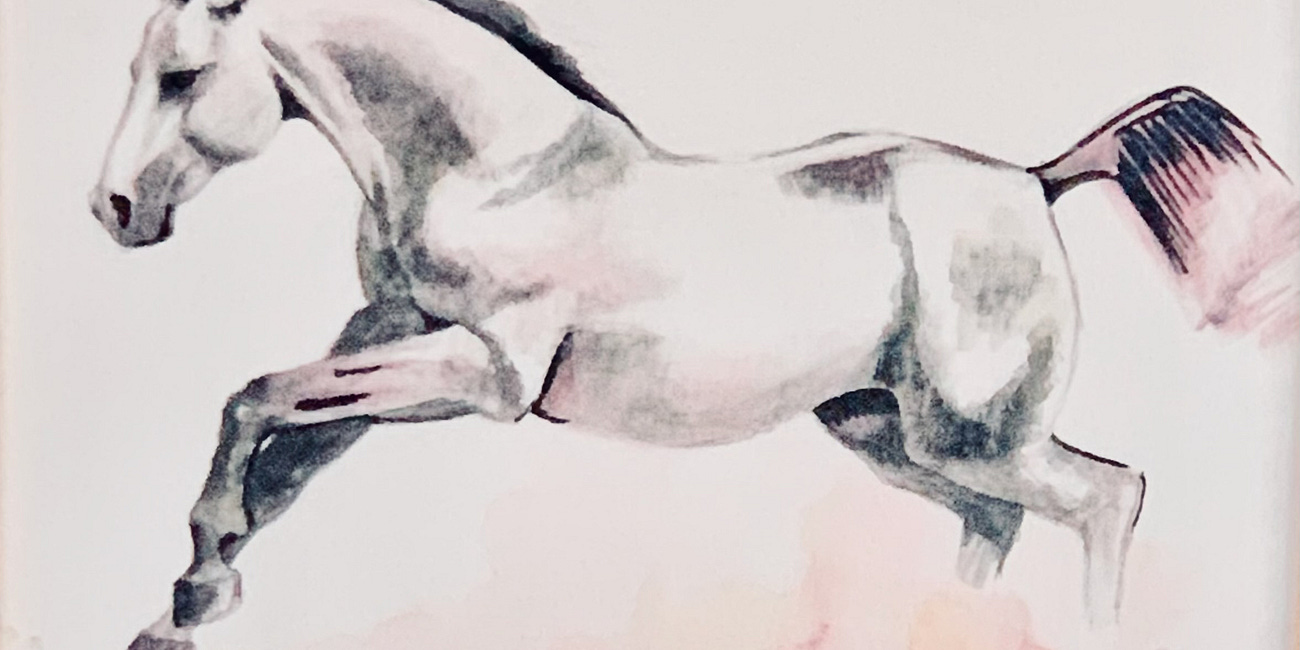Whether you’re gearing up for Independence Day, Muharram, Bastile Day, Calgary Stampede, Gion Matsuri, or xmas in July, this season is defined by the food we share. As was the case 6 months ago, when I drafted this post for another bundle of holidays, unable to finish it because it felt too exposing. Unlike anything else, food is both intimate and a rite of passage. It brings us in or casts us out. And for a perpetual outsider like me, it has proven harder to write about than I thought.
Help me by sharing your experience of food used to “other”!
Having lived and worked around the world (six continents for me), I think about “othering” quite a bit. In fact, this post builds on Nomading, one of the ten megatrends I’ve identified and the one that feels most personal because it has given me the world at the price of never belonging in it.
Here today, gone tomorrow: 1 in 30 people are on the move
After thousands of years invested in staying put, humanity is once again on the move. Its resettlement — whether temporary or permanent — is dramatically altering our world on every level.
Image credit: Republica from Pixabay.
Food as belonging
Social creatures, we crave to belong. However, should we step foot outside the norm — as changemakers notoriously do — we find belonging nearly out of grasp.
Out of the three things we need to live — air, water, and food — two are pretty universal. Food, however, is so deeply tied to our identity that it holds the power to both connect and divide us. Perhaps more than any other gesture or ritual, food determines whether we belong. I have felt — and been shaped — by its judgement. But I know that those judging me on the basis of food did not mean to inflict what I felt. Having left home alone at 15, I have paved my bumpy road to belonging with a LOT of food stories! I’d like to share some examples here so that, perhaps, we can all become less judgmental — and more curious — where it comes to food.
How could you eat kangaroo?
“Do you really eat kangaroo? But they are so cute!”
This question, posed by my (step)children the very first day I met them, forced me into the discussion of how cuteness, if held as the criteria for what they were willing to eat, would recast their menu. Possibly years earlier than I would have otherwise, it also had me explain ecologically sensitive eating: kangaroo — native and abundant in Australia — is the indigenous protein while hoofed animals are detrimental to that continent’s soil.
Image credit: xiSerge from Pixabay.
Gnawing on bones
The friendly kangaroo interrogation reminded me of the first time I found myself straddling the line between hunger, culture, and aspiration.
It was 1988, and I was six. In the foreshadowing of the Soviet Union’s collapse, the International Peace Fund selected eight families each from Russia and the US to participate in a cultural exchange. First, the Americans came over. The following year, we would travel to the US.
During the two weeks that all the families experienced as a tightly orchestrated program on the outskirts of Moscow, we would host a single American family for dinner at our home.
We pulled out all the stops! Our best preserves were accompanied by the crown jewel, roast chicken quarters. Until they appeared in stores from America (after the current American president, we called them Bush Legs), we had never seen such chunks of meat on our plates. My mom baked them in a cast iron pan, topping them with freshly chopped garlic to serve over rice.
While unambiguously content with the dinner overall, the Americans left most of the meat on the bone. Sure, a quarter poses a challenge for a fork and a knife, but they did not even seem to try much. Even as we cleared the plates, I knew we could not throw so much food in the garbage! So, later that evening, my entire family gathered in near-darkness of our tiny kitchen and gnawed on those bones for every morsel of nutrition.
In the coming years, I learned to wield a fork and a knife with a precision that spared nothing eatable. I also learned to be embarrassed about that evening.
Hungry at a buffet
The next summer, our eight families travelled to the US. Except for a similar evening at an American home, we stayed at a campground. Every mealtime featured a spread I now understand to be basic, but it was so extravagant to us that we gorged ourselves! Until, a few days in, I threw a fit because amidst more food than we had ever seen, I was so hungry I couldn’t stop crying. The food on offer was a treat, but it did not satisfy or comfort because we did not know it.
Eating off lawns
What is a delicacy to you?
Imagine being in a place where locals treat it like weeds.
In my early teens, I joined my dad and his new family on a road trip from Moscow, Russia to Finland. Within hours of our arrival, the entire trip became about mushrooms because it appeared that Fins didn’t consider anything but “button” (aka, champignon) mushrooms eatable, rendering nearly ALL of nature’s delicious goodness as mere landscape.
Image credit: Jürgen from Pixabay
In hindsight, only zombie movies illustrate the single-mindedness with which we, day after day, cleared acres of woodlands and, occasionally, trespassed on perfectly groomed lawns to pick an irrisistibly succulent porcino.
What did we do with all those mushrooms? We preserved. Like our lives depended on it.
Our Finish cabin had a sauna. However (very!) serious Russians are about their saunas, the mushrooms meant that we never used it after the first evening. Rather, it was dedicated to drying mushrooms around the clock. More than we could eat or gift.
Deliciousness was all around, dismissed by everybody but us. We couldn’t help ourselves, holiday be damned.
The urge to hunt in a Sydney park
Fast-forward a decade, and I — a twenty-something with an international education and a good job — had just moved to Australia to work for what proved to be one of the most globally transformative non-profits, the Green Building Council of Australia.
Within a week, I remember walking through a Sydney park when I spotted carp in the pond. “I could probably catch it after the park closes,” I thought but knew not to say.
Image credit: Maria Angélica Spínola Yamaguchi from Pixabay.
Australians (like many wealthy nations) see carp as decoration. As fish, it is considered “garbage” because it survives on nearly anything. How carp is “out” while chickens and pigs are “in,” given that they are not picky, either, beats me. However, having recognized food where others do not, I heard something more sinister than most when Trump said (inaccurately, ridiculously, and bigotedly) during the 2024 Presidential debate, “They are eating the dogs, they are eating the cats.”
Leftovers: an act of scarcity or respect?
Over 30 years in the “global North,” I have tried and failed to change my relationship to wasting food. At Cornell University, my on-campus job was in a dining hall, and I was so heartbroken about the waste that when I couldn’t divert it to a non-profit, I changed my schedule. Since then, I have often found myself laden with containers of leftovers from events in cities I did not know, looking for people who could use that food. Over too many stories to tell, I can attest that social status demands a comfort with wasting food. Neither a comfort nor a status I could ever attain.
What is “proper” food?
There is — of course — no evidence that any Haitian immigrants hunted or ate pets, so in Trump’s horrid statements, I hear but a permission structure to villainize anybody whose definition of “food” extends beyond the neatly wrapped items in a supermarket.
Wherever you are, your culture defines not only what and how we eat, but how that food is to be procured. And unless we catch ourselves, we’re likely to judge as a lesser anybody who deviates from the “proper” ways.
Subsistence living: admirable or shameful?
In Colorado, my family used to tease me every time we saw wild turkeys. Deer. Rabbit. “Don’t you look! No catching our dinner today!”
I can, indeed, catch and gut fish and know most medicinal herbs. While I have never hunted game, I think I could. I can weave, sew, knit, and darn; preserve anything; and cook a feast from seemingly nothing. Curiously, my skillset is where the far-right and the far-left merge, a phenomenon called the horseshoe.
Our ancestors were opportunistic hunter-gatherers. Everywhere they looked, they saw food — medicine — beautify — shelter — clothing. Today, we’re just as opportunistic but much more judgy. How can Elena see dinner in a public park? How unsuccessful is Alex to pack up leftovers? How weird/progressive is Jay to hold on to the carcass for bone broth?
We could use food to “our” rather than “other”
I grew up in a household that cooked every single thing we ate. There was no ready-to-eat food in our kitchen. And what we ate was, probably, the only thing we had access to. There were no other options! Or vegetarians. Or vegans. Or food allergies. So, I get why food — what it is, how it is made, and how and with whom it is enjoyed — defines us at a fundamental level. I even see the value it its power to identify outsiders. It is a survival thing. However, given that more often than not, outsiders no longer threaten your clan’s survival, I merely wonder how our shared meals can make more of us feel like we belong.

















Share this post